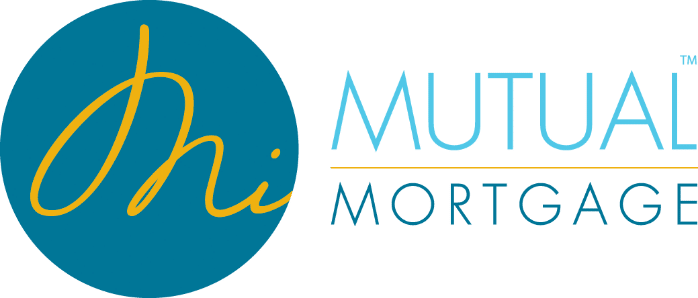FHFA Increases the Conforming Loan Limits Again. What does this mean for borrowers?
April Gould, November 29, 2023

The housing market is always evolving with changes influenced by economic conditions, market demands, and government regulations. One such change is today’s announcement by the Federal Housing Finance Agency (FHFA) to increase the conforming loan limits in 2024. So, what exactly is a conforming loan, why are the limits increasing and how does it affect those looking to buy or refinance a home this year?
By expanding these limits, it opens doors for more individuals and families to fulfill their dreams of buying a home or upgrading to their dream home with conventional financing without the cost and restrictions of a non-conforming loan.
Conforming Loans – What are they?
You might hear the term conforming loan and conventional loan used interchangeably; however, they are not the same thing. A conventional loan is any mortgage that is not backed by a government agency (like FHA, VA, or USDA). Conventional loans are issued by private lenders and banks and can either be conforming or non-conforming.
To be considered conforming, the loan must meet specific criteria. The FHFA which oversees the government-sponsored entities (GSEs) known as Fannie Mae and Freddie Mac sets guidelines such as loan limits, a borrower’s creditworthiness, and debt-to-income (DTI) ratios.
In other words, all conforming loans are conventional, but not all conventional loans are conforming. An example of a non-conforming conventional loan is a Jumbo Loan, as this type of loan exceeds the conforming loan limit.
Do these limits apply to all types of mortgages?
No. Conforming loan limits only apply to conventional loans, which are not backed by the government. Government backed loans such as FHA, VA and USDA have their own rules regarding loan limits.
A brief overview of these limits include:
FHA – Loan limits are set between the low-cost area and high-cost area limit values based on the median house prices for the area in accordance with the National Housing Act.
VA- With the passing of the Blue Water Navy Vietnam Veterans Act of 2019, Veterans who have their full entitlement are able to obtain a zero-down payment VA loan regardless of loan amount.
USDA- The USDA’s Rural Housing Services (RHS) has loan limits for Rural Development (RD) loans based on income and requires a property be in a designated area.
Understanding the Purpose of Loan Limits
The conforming loan limit is the maximum amount of money a borrower can mortgage on a conventional loan and still meet Fannie Mae and Freddie Mac guidelines. But why are there limits on conforming loans in the first place?
When a conventional loan meets the conforming standards, the loan is eligible for purchase by Fannie and Freddie. This process allows lenders and banks to have the liquidity necessary to continue providing home buyers with affordable mortgage loans. These limits exist to maintain stability in the housing market, prevent overborrowing and foreclosures, and prevent the GSEs from financing excessively large mortgages that might pose higher risks, therefore protecting both the borrower and lender.
How conforming loan limits are determined
At the end of each November, FHFA uses the Q3 House Price Index to adjust the baseline limit for most of the county and further adjusts higher loan limits in certain areas with an above-average cost of living.
The baseline loan limit is the value set for approximately 95% of the country. It is based on the county the property is in and the number of units the property has.
High-cost area loan limits can be as much as 150% of the baseline value and are applied to areas of the country where the average cost of living is particularly high. According to the FHFA website, the United States has over 3,000 counties or county-equivalent jurisdictions. Each year approximately 100 to 200 of these areas qualify for high-cost loan limits. Southern California, and New York City and DC are examples of areas that tend to satisfy the requirements for high-cost area loan limits.
Loan limit values are also higher in certain designated areas like Alaska, Hawaii, Guam, and the U.S. Virgin Islands. The limits these areas cannot exceed 150 percent of the high-cost ceiling value.
To see the loan limits in your area click here.
Reasons for Increasing Limits
When property values soar, it can be difficult for buyers to secure financing. Raising the limits enables borrowers access to favorable loan terms and enough money to buy at current home prices. In 2022, the new loan limit of $647,200 was an 18% raise form the 2021 limit– the highest increase ever. The limits again increased in 2023 to $726,200, and today the new one- unit baseline limit of $766,000 announced. The new high-cost area one-unit limit is $1,149,825. This change takes effect January 1st, 2024.
You may be wondering if the loan limits ever adjust down? And the answer is no. Conforming loan limits do not decrease. When home values decline, the loan limits will remain the same as the prior year. This was the case from 2006 until 2017 when the baseline loan limit value remained unchanged at $417,000.
The Benefit to Borrowers
The benefit of increased conforming loan limits is significant for borrowers. A home with a purchase price beyond the conforming loan limit must be financed through a nonconforming jumbo loan, which comes with stricter credit score requirements, larger down payment minimum and higher income requirements. Conforming loans offer several advantages to borrowers, such as:
Lower Interest Rates: Typically, conforming loans come offer lower interest rates than non-conforming loans as they are considered less risky. This results in reduced long-term borrowing costs.
Down Payments: Conventional loans offer down payments as low as 3%, making homeownership more feasible for prospective borrowers.
Favorable Terms: Borrowers may enjoy more lenient credit requirements and better terms compared to non-conforming loans.
More Options: Unlike FHA, VA or USDA, conventional conforming loans are not restricted to primary residence. You can use a conforming loan to buy a vacation home or investment property.
The Key Takeaway
The recent increase in conforming loan limits reflects the response to the current housing market. By expanding these limits, it opens doors for more individuals and families to fulfill their dreams of buying a home or upgrading to their dream home with conventional financing without the cost and restrictions of a non-conforming loan.
If you want to know more about your loan options, contact a MiMutual Mortgage Loan Officer today!
You are about to begin the mortgage loan application
- Applying on the MiMutual Mortgage Online Loan Application is quick, easy, and secure! The loan application will take about 25 minutes to complete.
- Once your application is submitted, you can log back into the MiMutual Mortgage Online Loan Application to securely upload requested documents, view your loan status, and communicate with your mortgage team.
- If you have questions, reach out to your MiMutual Mortgage Loan Officer.
Your guided mortgage journey starts here!
Start Application

